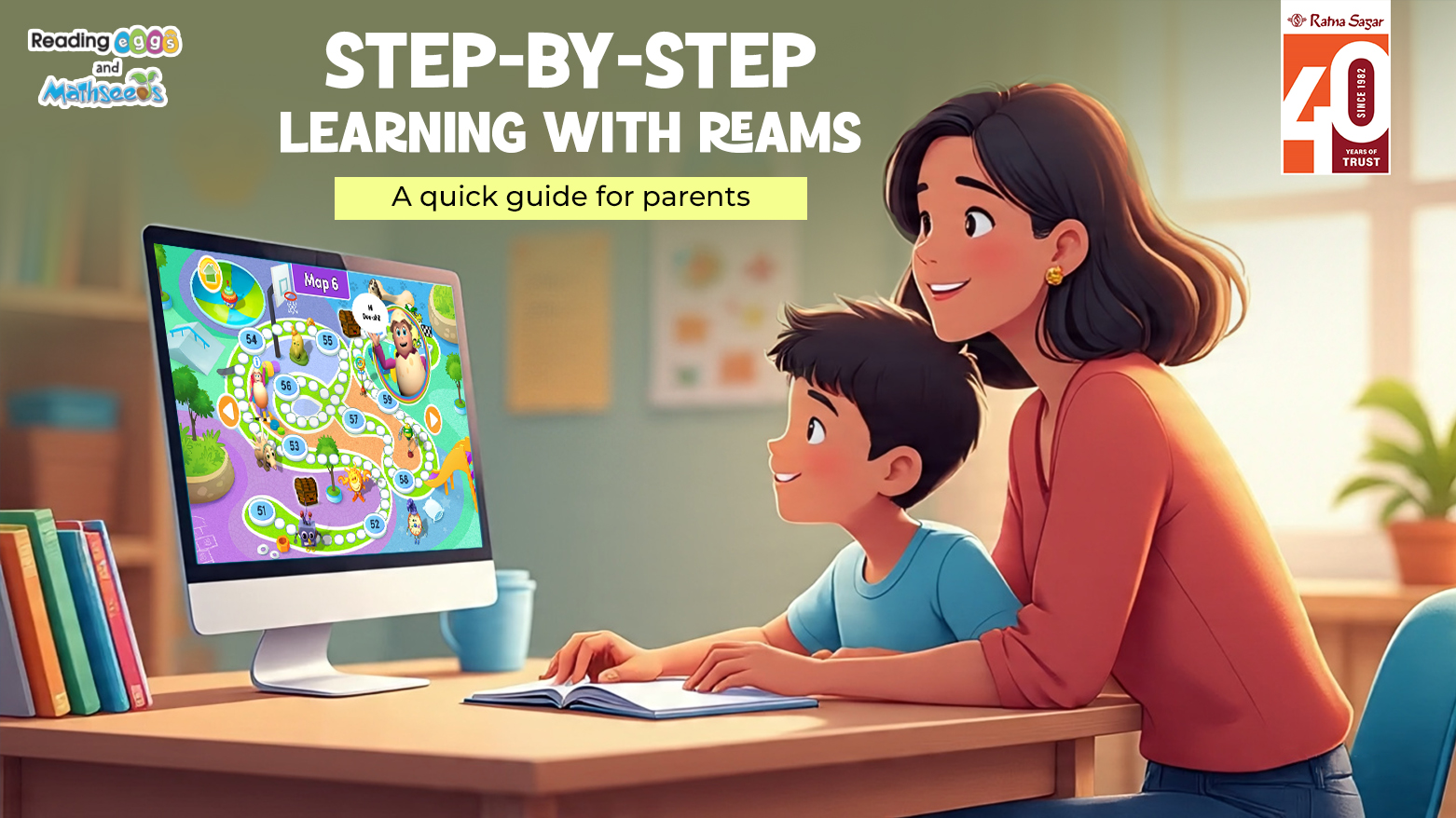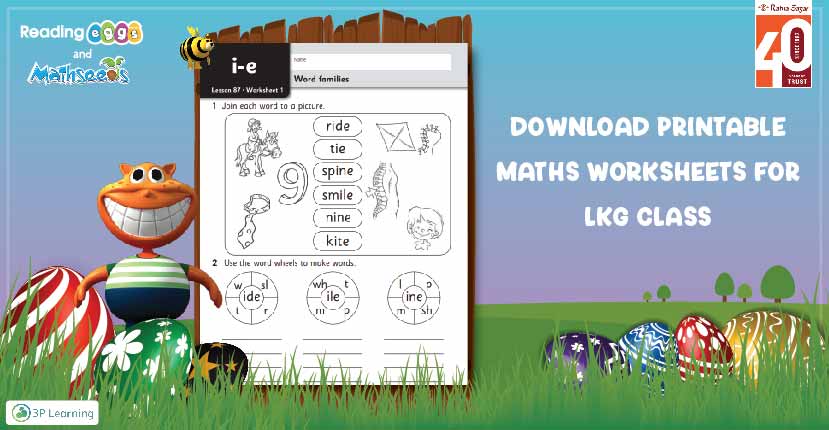
Download Printable Maths Worksheets For LKG Class
Mathematics is a core subject that begins with numbers and basic operations at the kindergarten level. All of us encounter and use maths in our everyday life. So, it becomes important to make the child familiar with the concepts. Maths enhance the logical reasoning and analytical skills of a child. Parents and teachers who are searching for a simple yet effective printable LKG maths worksheet should follow this article till the end. Maths worksheets for LKG class are a creative solution to keep the children engaged along with developing a habit of regular practice. LKG Worksheets for Maths have become a smart way to acquire the knowledge retained in the long run. Reading Eggs with Ratna Sagar provides a wholesome collection of lessons and worksheets for LKG classes which are age-appropriate, and designed in accordance with the syllabus and curriculum of CBSE, ICSE, and other state boards.  Our LKG maths worksheets are free to download and are available in PDF format. These worksheets have innovative questions which strengthen the basic mathematical skills of the child and help him apply the knowledge in real-time. With new tips and tricks, these LKG maths worksheets teach the concepts with fun-filled animated lessons and practice exercises. These printable LKG worksheets aid the students to understand numbers and their subdivisions. Students can assess the time taken to solve the problems and get their hands on crucial mathematical topics. The concepts and topics that our LKG maths worksheets cover are given below:
Our LKG maths worksheets are free to download and are available in PDF format. These worksheets have innovative questions which strengthen the basic mathematical skills of the child and help him apply the knowledge in real-time. With new tips and tricks, these LKG maths worksheets teach the concepts with fun-filled animated lessons and practice exercises. These printable LKG worksheets aid the students to understand numbers and their subdivisions. Students can assess the time taken to solve the problems and get their hands on crucial mathematical topics. The concepts and topics that our LKG maths worksheets cover are given below:
| Year | Lesson number | Lesson name | Domain | Lesson content |
| R | 26 | Long and Short | Shapes, Space and Measures | Compare and order which is longer or shorter using everyday language. Use comparative language: big, small, short, tall, tallest, longest, shortest. |
| R | 27 | Patterns | Shapes, Space and Measures | Copy, continue and create patterns. Identify colors. Match objects to color names. |
| R | 28 | Number Lines | Numbers | Count to 10. Read number words to ten. Connect counting to cardinality. Sequence numbers, counting forward and backward. Count to answer"How many?" questions. Subitise small groups of objects in different formalities. |
| R | 29 | Heavy and Light | Shapes, Space and Measures | Compare and order which is heavier or lighter using everyday language. Use comparative language: big, small, heavy, light, heavier, lighter. |
| R | 30 | Adding to 6 | Numbers | Connect counting to addition. Model addition with objects. Write equations for addends to 6. Subitise small groups of objects in different formations. |
| R | 31 | Counting to 10 | Numbers | Sequence numbers, counting forward and backward. Estimate the category of items in a group. Compare groups of objects. Use comparative language: more, less, the same. Count to answer"How many?" questions. Find pairs of numbers that make 10. |
| R | 32 | Add to 7 | Numbers | Connect counting to addition. Model addition with objects. Write equations for addends to 7. Subitise small groups of objects in different formations. |
| R | 33 | Number Words to 10 | Numbers | Read the words: zero, one, two, three, four, five, six, seven, eight, nine and ten. |
| R | 34 | Add to 10 | Numbers | Connect counting to addition. Model addition with objects. Write equations for addends to 10. Find pairs of numbers that make 10. Subitise small groups of objects in different formations. |
| R | 35 | The Cube & Sphere | Shapes, Space and Measures | Name cubes and spheres in the environment. Match and sort cubes and spheres. Identify objects that can be stacked and those that roll. |
| R | 36 | Adding to 10 | Numbers | Connect counting to addition. Model addition with objects. Write equations for addends to 10. Find pairs of numbers that make 10. |
| R | 37 | Patterns 2 | Shapes, Space and Measures | Copy, continue and create patterns. |
| R | 38 | Capacity | Shapes, Space and Measures | Use comparisons to decide which holds more or less. Use comparative language: full, empty, big, small, short, tall. |
| R | 39 | Time | Shapes, Space and Measures | Compare and order events using the everyday language of the time. |
| R | 40 | Add to 10 on a Number Line | Numbers | Connect counting to addition. Add on a number line. Model addition with objects. Write equations for addends to 10. Find pairs of numbers that make 10. |
| R | 41 | Numbers 11 & 12 | Numbers | Connect days of the week to familiar events and actions. |
| R | 42 | Days of the Week | Shapes, Space and Measures | Count to 15. Know, read and write the numerals 13, 14,15. Read number words to fifteen. Represent a number of objects with a written number. Compare numbers. Connect counting to cardinality. |
| R | 43 | Numbers 13, 14 & 15 | Numbers | Name cones and cylinders in the environment. Match and sort cones and cylinders. Name cones and cylinders in different sizes. |
| R | 44 | The Cone & Cylinder | Shapes, Space and Measures | Count to 17. Know, read and write the numerals 16 & 17. Read number words to seventeen. Represent a number of objects with a written number. Compose and decompose the numbers 12, 14, 16 and 19 into tens and ones. Compare groups of objects. Use comparative language: more, less, the same. |
| R | 45 | Numbers 16 & 17 | Numbers | Count to 20. Read number words to twenty. Sequence numbers, counting forward and backward. Count to answer "How many?" questions. Connect counting to addition. Model addition for addends to 10. |
| R | 46 | Numbers 18, 19 & 20 | Numbers | Count to 20. Know, read and write numbers to 20. Read number words to twenty. Represent a number of objects with a written number. Compose and decompose the numbers 11, 12, 13, 15 into tens and ones. Compare groups of objects. Use comparative language: more, less, the same. |
| R | 47 | Number Lines to 20 | Numbers | Count to 20. Read number words to twenty. |
| R | 48 | Number Words 11-20 | Numbers | Connect counting to addition. Model addition. Write equations for addends to 10. Find pairs of numbers that make 10. Subitise small groups of objects in different formations. |
| R | 49 | Doubles to Double 5 | Numbers | Count to 20. Know, read and write numbers to 20. . Compose and decompose teen numbers into tens and ones. Use comparative language: smaller, larger, Sequence numbers, count forward and backward. |
| R | 50 | Revision 0-20 | Numbers | Count to 20. Know, read and write numbers to 20. . Compose and decompose teen numbers into tens and ones. Use comparative language: smaller, larger, Sequence numbers, count forward and backward. |
Worksheet For LKG Class Lesson 26 Long and short
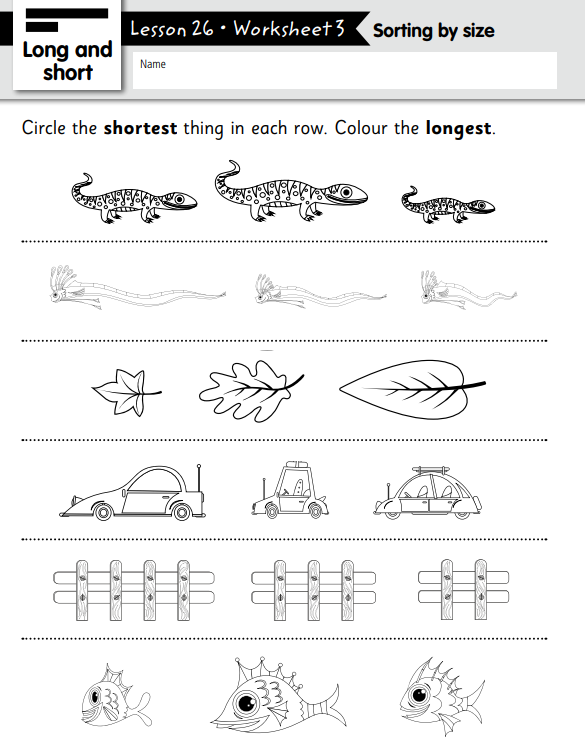
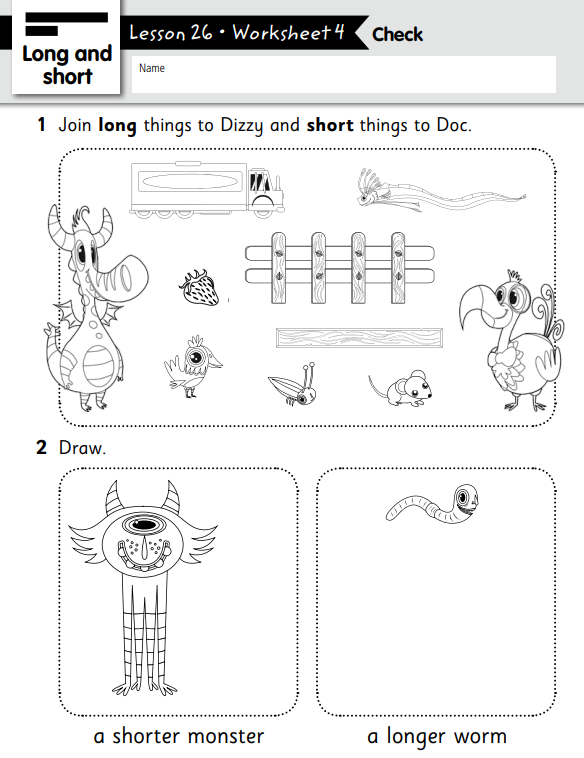
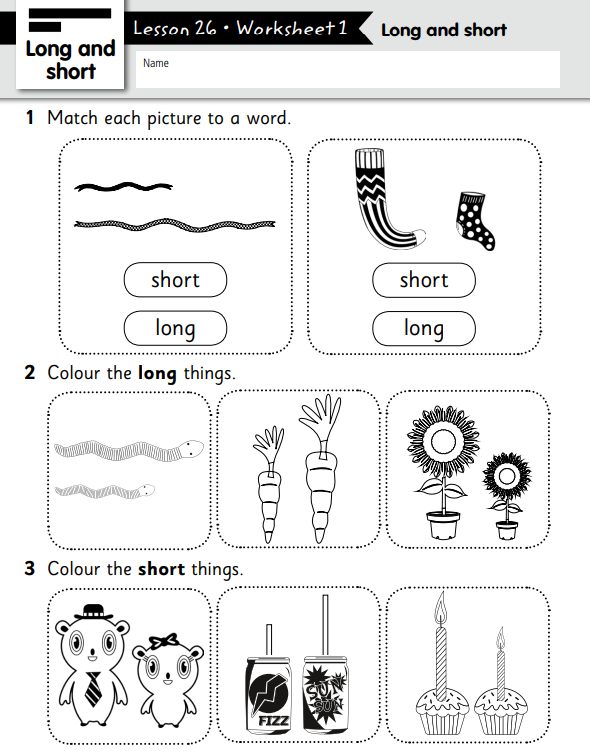
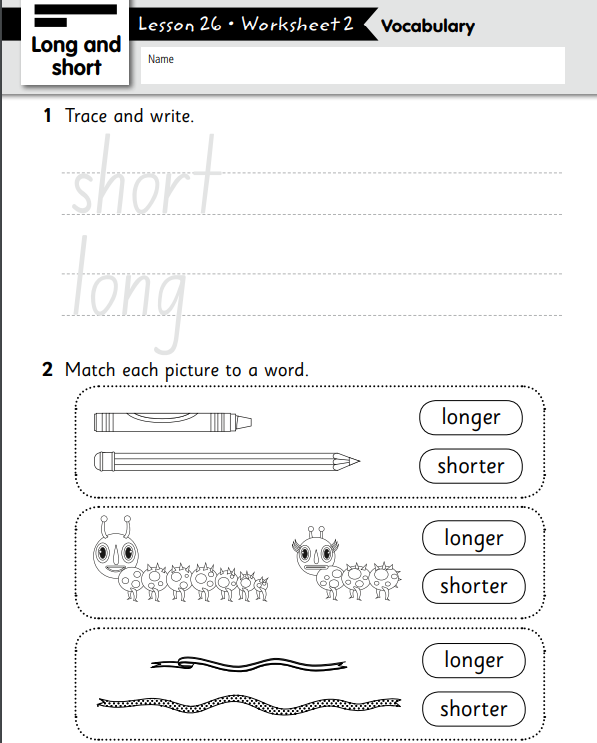
Worksheet For LKG Class Lesson 49 Counting Doubles
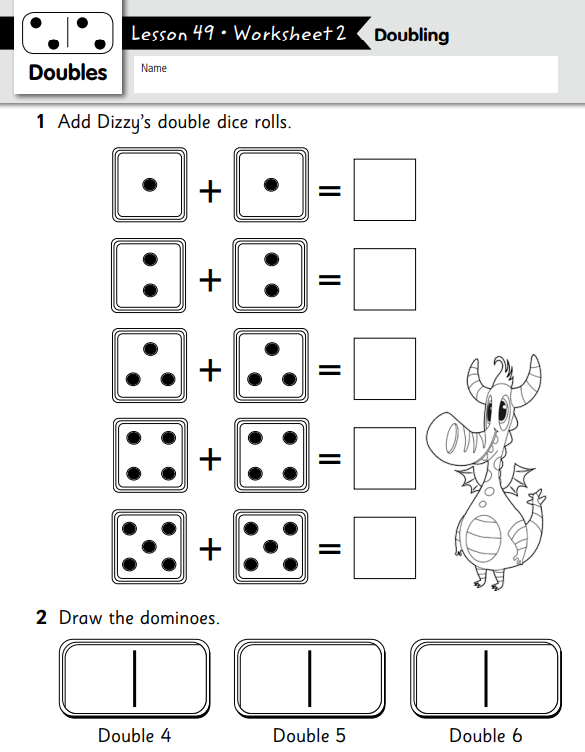
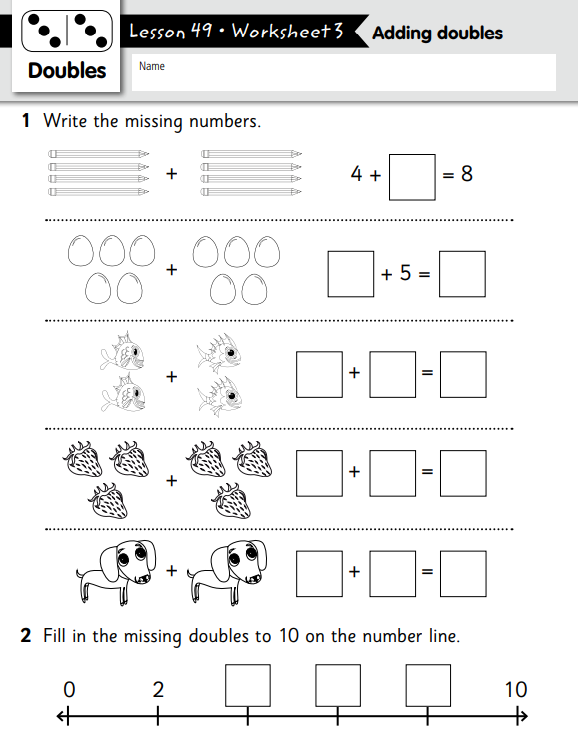
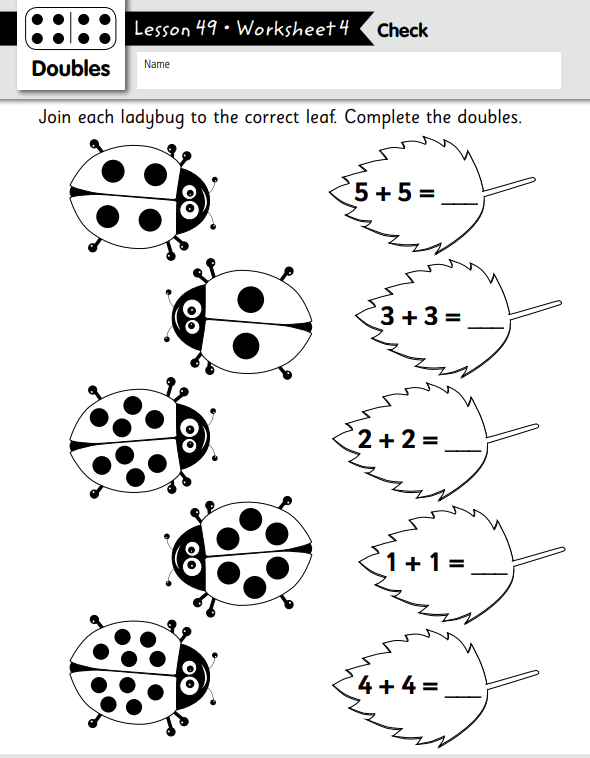
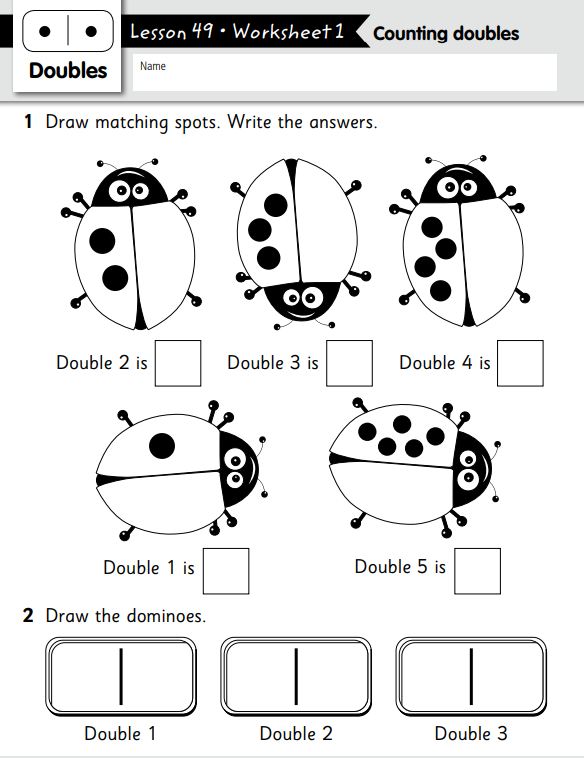 Children can practice and ace in the topics by simply downloading and the PDF format and giving regular time to maths practice. To know more about the Reading Eggs programme, click here! Sign up today for a 14-day free trial.
Children can practice and ace in the topics by simply downloading and the PDF format and giving regular time to maths practice. To know more about the Reading Eggs programme, click here! Sign up today for a 14-day free trial.  [/vc_column_text]
[/vc_column_text]
